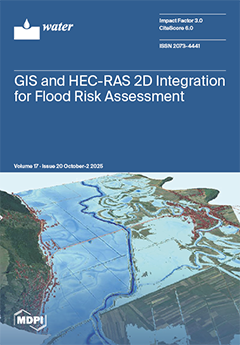The One Health approach is used to assess health-associated risks resulting from human exposure to antibiotic-resistant bacteria (ARB) that pose a significant public health risk. In this approach, wastewater treatment plants (WWTPs) play an important role in reducing bacteria and antibiotic-resistant genes (ARGs) in the environment. The ESKAPE (
Enterococcus faecium, Staphylococcus aureus, Klebsiella pneumoniae, Acinetobacter baumannii, Pseudomonas aeruginosa, and
Enterobacter spp.) are of significant concern due to their ability to evade the effects of multiple antibiotics, including last-resort treatments such as carbapenems and glycopeptides. This study aimed to investigate the environmental surveillance of ESKAPE bacteria in wastewater and their adjacent receiving water bodies in Limpopo Province, South Africa.
Methodology: Over a period of 6 months, all isolates were identified phenotypically, and genomic DNA was extracted using the QIAamp 96 DNA QIAcube
® HT Kit. Species-specific PCR was performed, followed by Sanger sequencing. The relevant sequences were compared to NCBI GenBank references using BLAST for confirmation and to assess the potential human health-associated risks.
Results: ESKAPE organisms identified phenotypically were confirmed using PCR in both WWTP samples. Bacteria such as
Acinetobacter baumannii and
Enterobacter spp. were not detected in upstream or downstream river samples, particularly during August and September. In December and January,
Staphylococcus aureus, Klebsiella pneumoniae, Acinetobacter baumannii, and
Pseudomonas aeruginosa were not detected in effluent samples at both sites. Phylogenetic analysis revealed a diverse range of clinically significant genera, including
Pseudomonas, Klebsiella, Enterobacter, and
Staphylococcus, with strains closely related to global clinical isolates. Many of the isolates were associated with resistance to carbapenems, fluoroquinolones, and aminoglycosides. In addition, some strains clustered with both methicillin-sensitive and methicillin-resistant lineages.
Conclusions: The findings emphasise the urgent need for increased genomic surveillance in environmental settings affected by wastewater discharge and highlight the importance of integrated antimicrobial resistance monitoring that connects clinical and environmental health sectors.
Full article





